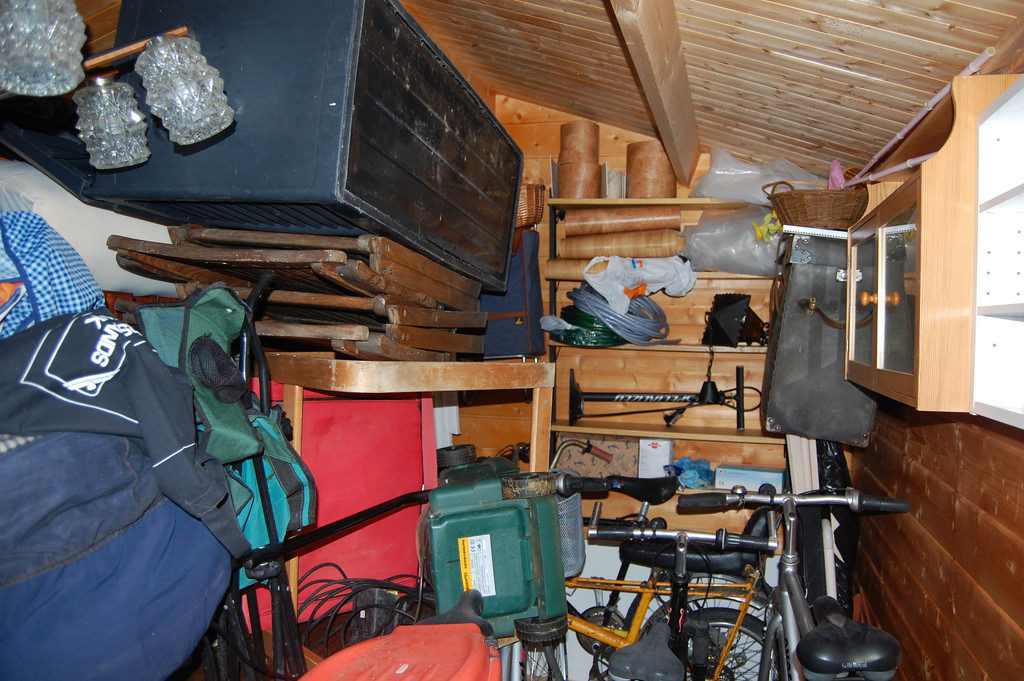What are the Best Storage Options for your Extra Stuff?

Have you ever bought something, took it out of its meticulously packed box and failed to get it back in? Sometimes moving can feel a bit like that. In your old home, for the most part, there was a place for everything and everything had its place.
Your new home might even be bigger, but for some reason, you feel like you are putting square pegs in round holes. You just can’t get all your things to look – well – at home in your new home. You really don’t want to get rid of the table that your Grandfather refinished or the very first piece of furniture you bought together as a couple, but they just don’t work.
Perhaps you’re doing some renovations and you need to clear space. Maybe it’s time to convert the kid’s room to a home gym. Whatever the reason, having extra stuff is an American phenomenon – so much so that the acquisition of extra stuff and the storing of it has prompted a handful of reality TV programs.
As Americans’ need for storage has grown, so have their options for storing. While in the past you might have rented a nearby locker, adorned it with a padlock and called it a day, today, you can store your items in a warehouse or even in a portable container. Each of the individual storage options has their advantages, so how do you choose which one is right for you?
Self Storage
Self storage, also known as “mini storage” is what most people think of when they think of storage. Essentially, with self storage, you are renting a room. You are responsible for moving your goods into storage, although you can use a mover. Some have garage-like doors and some have more conventional doors. Like when you are renting an apartment, the landlord is responsible for the general maintenance but is not responsible for your belongings. While most have some sort of security, it is up to you to provide a secure lock. Blankets and other types of furniture protection might or might not be offered by the storage facility, and if they do it will be at an extra cost. If anything is damaged while in storage, that’s also your responsibility. It is up to you to insure your items, although the storage facility might offer you insurance – at an additional cost. You pay based on the size of the room, no matter how much you have stored in the room. You will have access to your items anytime the facility is open.
Warehouse Storage
Warehouse storage is not as well known as self storage, but for many, it’s a convenient option. Moving companies typically have warehouse storage. The moving company moves your things into storage and they move them out. Everything is professionally packed and will remain in that condition until you are ready to have them delivered. Every item is inventoried both before going into storage and after being delivered. Your items might be stored on shelves or in wooden crates. Since your items never leave the mover’s possession, they have more liability, although it is limited. In California, the liability is only $.60 per pound (that’s right – no matter how valuable an item, you are paid per pound). I’d advise that you still check into additional insurance. You are only charged for how much space you are actually using, so it can be less expensive than self storage. Access is typically given on appointment only and don’t expect to root around in your stuff. The warehouse employees will have to pull them out for you.
Container Storage
Containerized storage is a relative newcomer to the industry. In the last decade, it’s grown tremendously in popularity and for good reason. It offers flexibility that neither warehouse or self-storage can. Containers come to your home. You generally have three days to fill them. Some hire movers to fill them. You have the option of keeping the container in your driveway indefinitely and for an additional cost, if your neighborhood allows. After the container is loaded, the storage company takes it to their warehouse or parking lot. You should purchase insurance for your items, or check with your homeowner’s policy. Like with self storage, you are charged for the full size of the container, no matter how much space you are using. Access policies will vary from company to company.


